Being an Ottawa Senators fan is tough. From the early days when the team broke the Washington Capitals’ record for most losses in a season, to more recent accusations that they’re the worst-run franchise in a league where the Edmonton Oilers exist, life has not been easy in Canada’s capital city. Yet there was a time when the Ottawa Senators were one of the best teams in the NHL.
In the 2000s, Ottawa was one of the most exciting teams in Canada, if not the continent. Along with the Toronto Maple Leafs, the two teams formed the most heated rivalry in hockey with the Battle of Ontario. Although success in the playoffs didn’t follow the Senators (mostly thanks to the Maple Leafs), they did make it to the Stanley Cup Final in 2007, nearly clinching their first championship in modern franchise history.
Related: Ranking the Senators 1990s 1st-Round Picks
However, in 2019, the Sens have returned to the league’s basement, posting their worst record since 1996. It’s easy to blame poor management or the regression of talent, but is that the only thing at play? In today’s salary cap era, the draft has become one of the most important tools to boost a franchise; did the Ottawa Senators take full advantage of it during their decade of dominance? By looking at how the team utilized the 10 drafts throughout the decade, it should become apparent at what went right…and what could have been done better.
The Dawning of a New Decade
1999 was a big year for Ottawa. After spending much of the ’90s accumulating top picks and building their core, the Senators were atop the Northeast division, and second only to the New Jersey Devils in the Eastern Conference. Alexei Yashin led the team in scoring, coming within six points of 100, the highest for any Senator since expansion. Supporting him was a cast of European young guns that looked to be the future of the franchise – Daniel Alfredsson, Marian Hossa, Andreas Dackell, and Magnus Arvedsson. Their prospects were performing well, too, with 1998 second-round pick Mike Fisher posting 106 points in the OHL. The new millennium looked to be ready for the Senators to own.
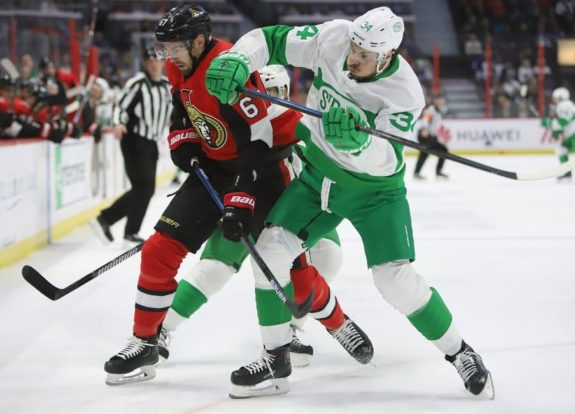
However, one other team decided that the new millennium was also theirs for the taking. In 1998, the Maple Leafs were moved from the West to the East, thanks in part to an expansion team – the Nashville Predators. That placed the Leafs in Ottawa’s division, and as both teams began realizing their potential, it wasn’t long before bad blood was spilled, thanks to Hossa clipping Leafs defenseman Bryan Berard in the eye in 2000. The Leafs retaliated by knocking out their rival in the opening round of the 2000 playoffs in six games.
The First Round – A Big Hit
The early playoff exit left the Senators with the 21st overall selection, and they had one thing on their mind – toughness. With many of their rookies and prospects progressing nicely, and Chris Phillips missing significant time due to injury, Ottawa decided it needed some grit. With their first pick, the Sens went with the imposing Russian defenseman, Anton Volchenkov. He already was regarded as a punishing hitter already, and saw his draft stock rise after playing with the Russians at the IIHF U-18 Tournament, where he captured a silver medal.
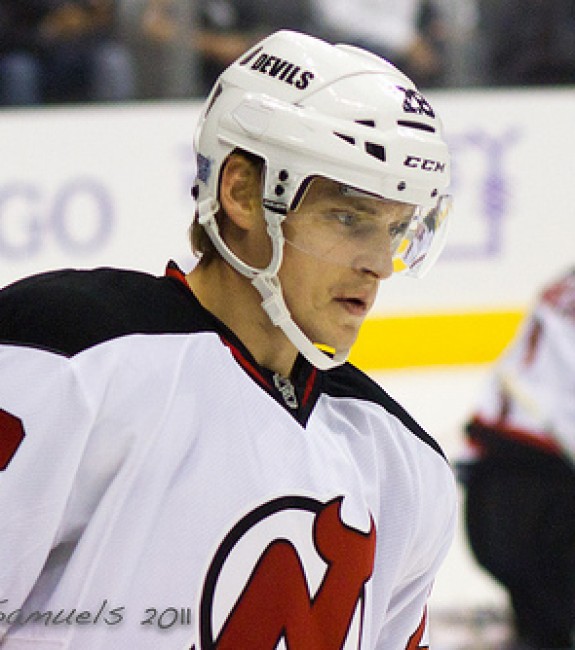
It worked out perfectly for the Sens. He joined the team in 2002 and immediately established himself as a reliable defensive defenseman who could throw big, game-changing hits and block shots. For the next seven seasons, few defensemen could compare to Volchenkov’s effectiveness in the back end, and during that span, the Senators missed the playoffs only once, in 2009. Volchenkov joined the New Jersey Devils in 2010 after general manager Bryan Murray was unwilling to pay what the Devils offered, citing that he was “worried that Volchenkov’s style of play would begin to take its toll on his health.” (from ‘Top 10 Ottawa Senators draft picks of the first 20 years’, Ottawa Citizen – 18/5/14).
Round Two – A Mixed Bag
The Senators had two picks in the second round due to the inability to sign 1998 first-rounder Mathieu Chouinard. He’d decided to re-enter the draft, and as such the Senators were given the 45th selection as compensation to add to their 55th. So, with their first selection in the round two, the Ottawa Senators selected…
Mathieu Chouinard.
The reason behind this move is inconceivable. The Sens and Chouinard had been in contract talks since his 1998, but they could not reach an agreement, and Chouinard hoped that by re-entering the draft, he could get a fresh start elsewhere. However, the Senators were apparently not finished with their former pick and re-drafted him. Unsurprisingly, he’d never play in Ottawa, playing three seasons in the AHL and IHL before signing with the Los Angeles Kings as a free agent. Chouinard made his NHL debut there in 2004, stepping in to relieve Cristobal Huet in the last three minutes of the game, stopping two shots.
Thankfully, Ottawa made up for the blunder with the 55th pick, selecting Antoine Vermette. A point-per-game player for the Victoriaville Tigers of the QMJHL, the Central Scouting Bureau slotted Vermette as the 15th-best prospect in North America, yet he was viewed as a one-dimensional scorer and teams balked at taking the talented player.
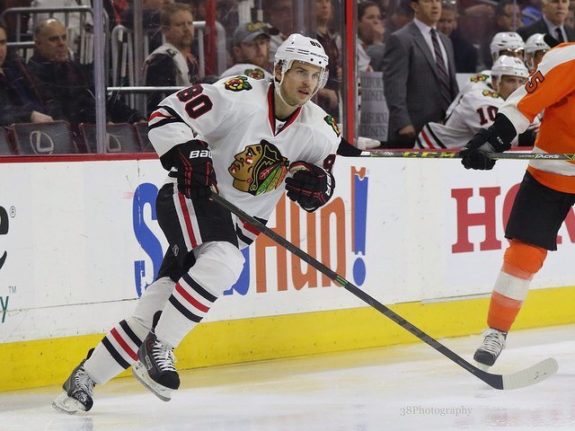
The likes of Libor Ustrnal, Tomas Kurka and Kris Vernarsky, all ranked lower, were taken ahead of Vermette. Those three players combined for 34 NHL games and six points. Vermette ended his career with 1046 games and 515 points, scoring a career-high 53 in 2008 with the Senators.
The Mid-Rounds – Close Calls
The Entry Draft is often more about quantity than quality; the more picks you have, the higher chance you’ll end up with a diamond in the rough. The New York Rangers had nine picks in 2000 and only found Henrik Lundqvist with their seventh-round selection. So, with five picks in three rounds, the odds were in the favour of the Ottawa Senators.
“You can’t be a successful team building through the draft with one player a year. That’s No. 1. It’s not about first-round picks.”
Craig Button, TSN’s scouting expert and former GM (from
”It’s not about first-round picks’: Successful teams find gems in later rounds of NHL draft’, National Post – 20/6/16)
The gamble didn’t pay off, however. Their third-rounder, Jan Bohac, a big-bodied center from Slovakia, was seen as a boom-or-bust prospect, and the CSB ranked him above Niklas Kronwall and Tomas Kopecky (both of whom went much earlier), no doubt in part to his contribution to the Czech’s U-20 World Junior gold medal win that winter. But after his draft year, Bohac’s play dropped off, was never offered an entry-level deal, and finished his career playing in lower leagues across Europe.
In the fourth round, the Senators had another compensation pick, this time from restricted free agent Lance Pitlick, who signed with the Florida Panthers that spring. The Senators decided to move their original pick, 118th overall, to Los Angeles for two more fifth-round picks. Now armed with four picks – and three consecutive – instead of two, the Sens picked Derrick Byfuglien, Greg Zanon, Grant Potulny and Sean Connolly, all big, tough players who had both grit and character. However, none of them developed the way the Senators had hoped, and none were offered contracts. Only Zanon managed to break into the NHL, signing with the Predators after joining their AHL affiliate as a free agent and later becoming a reliable depth defenseman.
Oh, and who did Los Angeles take, you may ask? Lubomir Visnovsky. He’d end his career with four 40-plus point seasons, and nearly 500 career points.
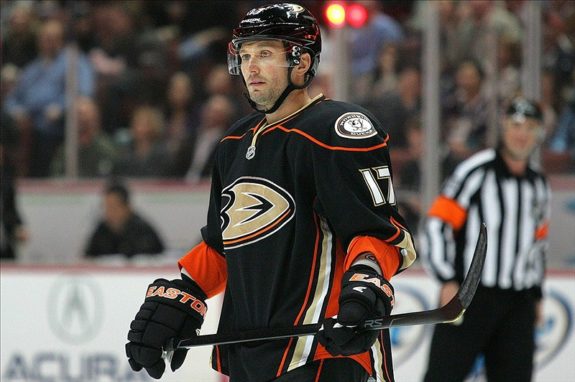
The Late Rounds – Nothing
By the end of the draft, the Senators had only one thing one their mind – toughness. Their previous picks had a more balanced set of skills, Ottawa went full into enforcer territory. In Round No. 6, they picked Jason Maleyko, a tough defenseman playing for the Brampton Battalion in the OHL who’d been passed over in 1998 and 1999. The Sens hoped they’d found a late-bloomer, but after a fairly average junior career (except for his 497 penalty minutes), he was left unsigned, and Maleyko played in several different leagues before retiring in 2007. He now serves as a scout for the Kingston Frontenacs.
Ottawa traded away their seventh-rounder to the Tampa Bay Lightning for depth goaltender Rich Parent. Tampa then traded the pick to the Buffalo Sabres, who’d draft 6-foot-5 Paul Gaustad, Potulny’s cousin. Had they kept the pick, maybe the gritty, checking-line center and one of the best faceoff men in the league could have joined the Senators instead.
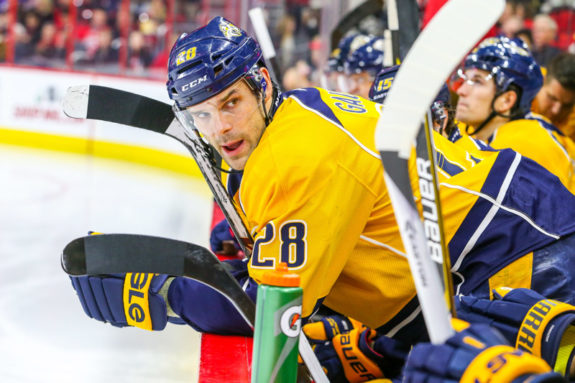
Instead, the Senators chose to get an instant injection of grit by trading their eighth-round pick to the Detroit Red Wings for Shane Hnidy. Detroit would draft college winger Todd Jackson, who never panned out for the Wings. Hnidy, on the other hand, would become an important piece in the Battle of Ontario.
Finally, with their ninth-round pick, the Sens took a chance on a giant defenseman playing for the Portland Winterhawks and Gaustad’s teammate, James DeMone. Standing at 6-foot-6, he did little else other than accumulate penalty minutes, so it’s no surprise he never made it to the NHL, retiring in 2007. However, DeMone did compete in a CBC reality TV show called Making the Cut, winning the opportunity to attend the Vancouver Canucks training camp. He, however, never made it past prospects camp.
Final Grade – B
The Senators did well with their early picks in 2000, but became too focused on accumulating toughness and grit in the later rounds, causing them to miss out on several decent prospects. Still, it could have gone much worse, as Volchenkov and Vermette became important parts of the Senators of the 2000s.